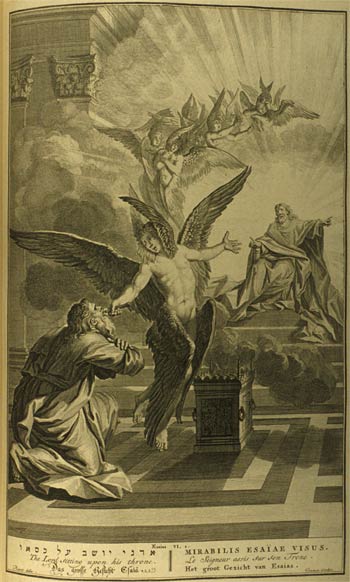 Continuing from Ascension of Isaiah: More Questions. . . .
Continuing from Ascension of Isaiah: More Questions. . . .
. . .
In these posts I am reexamining the place that the Ascension of Isaiah has in those “Christ myth” arguments that use it as supporting evidence for an early Christian belief, perhaps even a pre-Pauline belief, that Jesus was crucified in a celestial world beyond this physical one. Three mythicist authors have published this viewpoint: Paul-Louis Couchoud, Earl Doherty and Richard Carrier. James Barlow has focused on making a case for the Ascension of Isaiah being known to the apostle Paul and in the process has offered the most in-depth case for the shorter version of the Asc. Isa., the version that omits the account of Jesus’ birth and death on this earth (11:2-22), being the original text. (I further posted my growing doubts about Earl Doherty’s line of reasoning in the same direction: Ascension of Isaiah: Questioning Three of Earl Doherty’s Arguments.)
These posts have been focussed on specific points made by James Barlow because his are the ones that are so detailed and thorough. In doing so, however, I have not given Barlow’s overall thesis its strongest presentation for review in its own right. To make amends but also to make public an important hypothesis that deserves serious examination I posted his thesis in full: see “The Ascension of Isaiah” and Paul – a case made by James Barlow.
I continue here to follow my own questioning of a range of arguments that have been made to favour the view that the shorter version of the Asc. Isa. (the one without the birth of Jesus in Bethlehem) is closer to the original version. My perspective is open to change and by the time I finish this series I may even have changed my mind again. But till then, let’s examine some more points set forth by James Barlow.
So we continue . . .
We start with one more point made back in 1900 by R. H. Charles that he believed indicated the originality of the “pocket gospel”, 11:2-22 as found in the Ethiopic manuscripts, the same passage narrating the birth of Jesus, his move to Nazareth, his performing miracles and eventual crucifixion in Jerusalem. (We start with R. H. Charles because his 1900 work was a foundational text upon which many subsequent discussions have been based even if and when they revise and update his discussion.)
Not knowing who he is
In all versions — Latin, Slavonic, Ethiopic — of the Asc. Isa. that contain chapter 9 there is the prophecy that those who crucify the Beloved will do so not knowing who he is.
And the god of that world will stretch forth his hand against the Son, and they will crucify Him on a tree, and will slay Him not knowing who He is. (Asc. Isa. 9:14)
Continue reading “Ascension of Isaiah: Continuing Questions”
